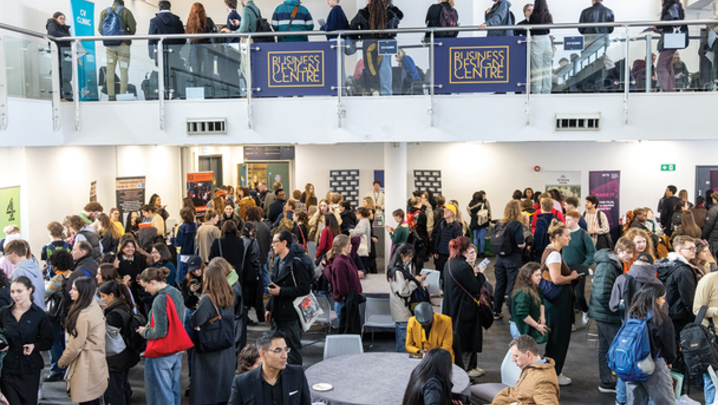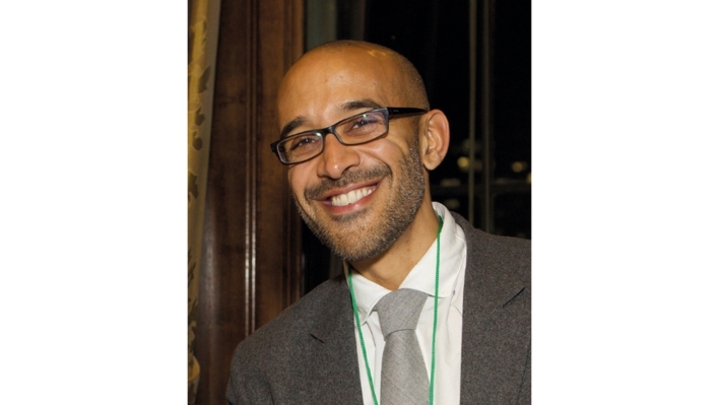YouTube is booming but a viable business model for the platform’s contributors remains elusive, finds Tara Conlan
In October, YouTube hosted Brandcast, a glitzy showcase of some of its biggest talent. Held in London, it featured Jamie Oliver, whose Food Tube channel has more than 1 million subscribers, and Zoella, aka vlogger Zoe Sugg. She started her channel in 2009 and has 6.75 million subscribers at the time of writing.
It was the kind of expensive event that UK broadcasters, including the BBC, used to put on when they had "Jacuzzis of cash".
According to digital researcher eMarketer, YouTube's net advertising revenue will hit $3.24bn in 2014. This represents around 7% of owner Google's total advertising revenue.
YouTube's own figures state that more than 1 billion unique users visit the site each month; during that time they watch around 6 billion hours of video.
These are big numbers. It is no wonder that Ynon Kreiz, CEO of YouTube multi-channel network (MCN) Maker Studios, described YouTube as "the largest cable company in the world".
But who is really making money out of posting videos on YouTube?
And can Maker (bought earlier this year by Disney for an eye-watering $950m) and the other MCNs available on the platform sustain a business model that seems better suited to bedroom start-ups than boardrooms?
Brandcast certainly sent out a signal about monetising YouTube.
Tom Fryett, Video Associate Director at media buyer Starcom MediaVest, was there: "For Google to hold that kind of thing, and that kind of format, shows that is where it wants to compete. It wants to compete with TV stations. I thought it was very impressive."
Brandcast included the UK launch of Google Preferred. It uses an algorithm to assess the channels that have the best audience engagement and the most views, which advertisers can then use to their advantage.
Fryett says: "the preference score and data can help find" talent and "make them manageable for advertisers and put them somewhere where advertisers can then leverage that to reach audiences".
But making money is usually not the driving force or main motivation for YouTube creators. Rising star Buddy Munro, maker of National Geographic stunt show True Tube, says the main appeal is that there are "no barriers to entry and you are your own boss".
"YouTube is just another channel. But I have complete editorial control," he adds. "It's a great learning ground. It is also speedy. I'm a big fan of TV, but it often takes a long time to get things commissioned."
 His hilarious escapades in The Adventurists clocked up 150,000 views over five to six months. But Munro says he makes "pennies" from YouTube – partly because he is selective about the advertising that appears around his content.
His hilarious escapades in The Adventurists clocked up 150,000 views over five to six months. But Munro says he makes "pennies" from YouTube – partly because he is selective about the advertising that appears around his content.
Moreover, Munro has declined to "seed" his work. This is the system whereby creators pay to have their content promoted via blogs and social media.
However, significant amounts of money can be made from YouTube in a variety of ways. New players are given advice on how to cash in at YouTube's Creator Academy.
Options include paid subscription and product placement. But the most basic way is from display advertising overlays (typically, banners) or in-stream adverts.
Pre-roll adverts (the ones you sit through after you've pressed play) can be lucrative, unless they are skippable.
YouTube's Partner Programme enables creators and channels to share advertising revenue; the platform currently takes 45% of the revenue from pre-roll ads.
Fryett thinks the Partner Programme "means short-term gains have been made by enterprising young people in their bedrooms with ever-increasingly sophisticated pieces of tech. They can create very professional-looking pieces of content.
"But I think it's a long game. Jamie Oliver might not make all of the money he has invested in YouTube back in the first two or three years, but I think he's persevering with it because he can see the benefits further down the line."
Oliver's Director of Food, Zoe Collins, agrees: "It is a long game for us, but not because it's a pilot for traditional media. We are passionate about the platform as a way to reach different audiences that traditional media cannot reach.
"We also believe that a new generation of stars will arise from the online industry – indeed, we are seeing that crossover of talent from digital to traditional happen already... but that is not the point for us.
"The way audiences consume content is changing and we want to be at the forefront of that change."
Brands now recognise the power that YouTube creators have on influencing an audience
Deloitte head of tech and media research Paul Lee co-authored a report this year questioning whether much money can be made from advertising around YouTube content.
Long-form traditional TV ads "generate about $200bn annually worldwide – about 40 times greater than estimated revenues from video clips," says the Deloitte report.
To put this into context, says Lee: "If we convert both viewers and views to total hours viewed, US residents have spent an aggregate of 38 million hours watching Gangnam Style since 2012 – equivalent to the total viewing time for four and a half episodes of The Big Bang Theory."
Gamer PewDiePie (aka Felix Kjellberg) is YouTube's most popular star. He has around 31 million subscribers and is thought to earn some $7m a year from advertising, according to Deloitte. So how do people like him get rich on YouTube?
Oliver's Head of Commercial, Lisa Tookey, explains: "The money isn't necessarily made via pre-roll ads, although some channels and creators at the multimillion subscriber level will be making reasonably significant revenue.
"The real money is in the integrated, branded content that [adverts] are positioned around, as well as off-YouTube products and platforms.
"Brands now recognise the power that YouTube creators have on influencing an audience with whom they have a direct dialogue."
She continues: "If PewDiePie recommends buying the latest gaming kit, you can be sure it will sell out.
"Similarly, Zoella now has a successful beauty range, sold both on- and offline, as well as a book to add to her empire.
"And this is absolutely true for Jamie. His success on Food Tube is amplified by an eco-system of owned media, ranging from books and magazines to his recipe app and website.
"For brands wanting to be fully integrated into Jamie's world, he can offer direct access to all of his 'touchpoints' – which collectively reach more than 31 million people every month."
Fryett says: "I think the bedroom creators are winning for now, but when you see Disney picking up Maker you grasp that the people at the top are fast realising the value of this platform, too."
But are the multichannel networks on YouTube, such as Maker and rival Base 79, too dependent on the creators? After all, it is they who have the direct relationship with the viewers, not the MCNs.
There is indeed, a risk here, believes Fryett: "Facebook is also keen to be an alternative platform for TV advertising spend and wants to leverage video as well. Someone like PewDiePie could be lured away in a big-money transfer to Facebook, for example. It's a massive content landscape now."
Zoella's company made a profit of just over £270,000 in the year to 31 March. It is not known how much was derived from advertising, rather than merchandise, but it does suggest that YouTube can create stars with lucrative careers.
With consumers increasingly on the go and consuming content on tablets, short-form video is much in demand. But, from what we've witnessed so far, YouTube content looks likely to be seen predominantly as a video snack, rather than as a whole televisual meal.
Who is Zoella?
By Sanya Burgess
The Bambi-eyed, dip-dyed, bubblegum and sweetness that is Zoe Sugg has reportedly made £270,000 in the last year as an internet personality.
Zoella, as she is known online, has amassed an army of subscribers who regularly tune in to see her talk about make-up, styling and personal advice.
The 24-year-old began blogging from her parents’ house in Wiltshire while working in interior design. After being made redundant, she was encouraged by fans of her blog to start making videos.
Sugg is often quoted as remembering her parents telling her to ‘get off her laptop and to get a real job’; her vlog now attracts around the same viewing figures as the current Doctor Who series.
The appeal of Zoella is that she is seen as a great role model. She’s a bubbly, big-sister figure who speaks about the importance of a healthy body image and self-respect, as well as eye shadow and hair styles.
Zoella is a digital ambassador for mental-health charity Mind and often speaks about her own anxiety, which prevented her from going to university. She emphasises that the products she promotes on her vlog are carefully chosen by her so that she can maintain the level of trust she has built up with her loyal audience.
It is this level of trust, combined with the amount of access a viewer gets to Zoella, that has entranced so many 13- to 20-year-olds across the UK. Any teenage girl in the country with an internet connection can log on to YouTube and instantly be with their digital best friend.
Zoella works hard to make sure the barrier of a screen is forgotten by chatting away as if the viewer is in the room with her, occasionally asking opinions or questions that are faithfully answered by her audience in the comment section.
She often appears on-screen with no make-up and her hair in a scraggly bun, as well as looking all dolled up. Zoella brings her audience into her world and creates a friendship, one that may be digital but feels genuine and valuable to those on the other side of the laptop screen.
As well as viewers having access to Zoella, Sugg also brings in those close to her. The viewer regularly meets her vlogger brother, Joe, and even her parents pop in and out of her videos. Perhaps most importantly, they also meet her boyfriend.
Zoella and Alfie Deyes have been called ‘the Posh and Becks’ of YouTube. Deyes runs his own successful blog called PointlessBlog (which sees him smear Nutella on his face and eat cat food in front of his own millions of fans). He has also recently published a bestseller, The Pointless Book. In the spirit of the age, the pair met through YouTube and announced their relationship in a bespoke vlog.
Zoella and Alfie regularly appear in each other’s vlogs, which shrewdly allows them to tap into each other’s fan bases. This habit of appearing in fellow blogger’s videos is commonplace between the members of the YouTube ‘Britpack’ group, which includes Joe Sugg (Zoe’s brother), 23, Caspar Lee, 20, Tanya Burr, 25, and several others.
What’s next for Zoella? Like many of her fellow vloggers, she has expanded her brand beyond the laptop screen. Sugg is releasing a book entitled Girl Online, and has recently launched a line of bath products.
In an unexpected move to traditional media, the internet celebrity is soon to guest present a Radio 1 show. Perhaps it will not be long until audiences see Zoella on primetime television – but she is very unlikely to be leaving her online presence behind.







